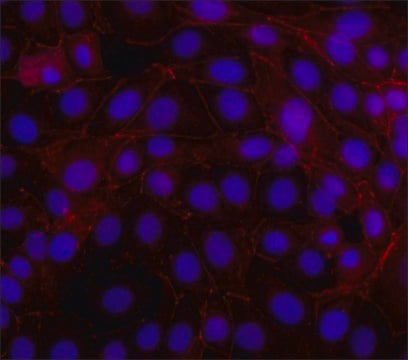329460
Kerosene
reagent grade, low odor
About This Item
Prodotti consigliati
Grado
reagent grade
Densità del vapore
4.5 (vs air)
Tensione di vapore
0.23 mmHg ( 20 °C)
Forma fisica
liquid
Temp. autoaccensione
442 °F
Limite di esplosione
5 %
P. eboll.
190-250 °C (lit.)
Densità
0.8 g/mL at 25 °C (lit.)
Cerchi prodotti simili? Visita Guida al confronto tra prodotti
Descrizione generale
Applicazioni
- As a fuel in the preparation of kerosene–alumina nanofluid.
- In the preparation of carbon nanoparticles (CNPs) by an incomplete combustion method.
- In the synthesis of wrinkled graphene nanostructures by thermal decomposition followed by modified Hummers′ method.
Caratteristiche e vantaggi
- High density
- High enthalpy
- Easy storage
Quantità
18.9 L = 5 gal
Avvertenze
Danger
Indicazioni di pericolo
Consigli di prudenza
Classi di pericolo
Aquatic Chronic 2 - Asp. Tox. 1 - Skin Irrit. 2 - STOT SE 3
Organi bersaglio
Central nervous system
Codice della classe di stoccaggio
3 - Flammable liquids
Classe di pericolosità dell'acqua (WGK)
WGK 2
Punto d’infiammabilità (°F)
179.6 °F - closed cup
Punto d’infiammabilità (°C)
82 °C - closed cup
Certificati d'analisi (COA)
Cerca il Certificati d'analisi (COA) digitando il numero di lotto/batch corrispondente. I numeri di lotto o di batch sono stampati sull'etichetta dei prodotti dopo la parola ‘Lotto’ o ‘Batch’.
Possiedi già questo prodotto?
I documenti relativi ai prodotti acquistati recentemente sono disponibili nell’Archivio dei documenti.
Protocolli
Summary application report for analysis of moisture in Kerosene
Il team dei nostri ricercatori vanta grande esperienza in tutte le aree della ricerca quali Life Science, scienza dei materiali, sintesi chimica, cromatografia, discipline analitiche, ecc..
Contatta l'Assistenza Tecnica.











